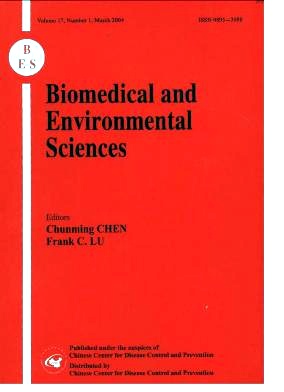Polymorphism of N-acetyltransferase 2 (NAT2) Gene Polymorphism in Shanghai population:Occupational and Non-occupational Bladder Cancer Patient Groups
-
Key words:
- Benzidine /
- Occupational exposure /
- N-Acetyltransferase 2 /
- Polymorphism /
- Bladder cancer /
- Dyestuff industry
Abstract: Arylamine N-acetyltransferases (NATs) are involved in the detoxification of aromatic amines and hydrazine. In order to explore the possible association of NAT2 polymorphism with bladder cancer risk in benzidine exposed or non-exposed Chinese individuals, healthy subjects, subjects with bladder cancer of a former benzidine exposed cohort in Shanghai dyestuff industry and a group of bladder cancer patients without known occupational exposure to aromatic amines were genotyped for NAT2 gene polymorphism. Methods NAT2 genotyping was performed with a set of RFLP procedures at seven major polymorphic loci of gene coding area: G191A, C282T, T341C, C481T, G590A, A803G and G857A. Results The wild allele NAT2 *4 was the most prevalent allele (59%) in healthy individuals. The alleles NAT2*6A and NAT2*7B were also frequently observed (21% and 17%, respectively). In contrast to Caucasians, the percentage of slow acetylators was lower (12% in Chinese vs. 58% in Caucasians, P<0.001). No relevant differences were observed for homogenous rapid, heterogeneous rapid/slow and homogeneous slow acetylation genotypes between the healthy subjects and both groups of bladder cancer patients. Conclusion The present work did not support the association of slow acetylating genotypes of NAT2 gene with elevated risk of bladder cancer in Chinese whereas it was documented as an important genetically determined risk factor in Caucasians. Different mechanisms might play a role in individual susceptibility to bladder cancer related with aromatic amine exposure in various races or ethnic groups.
| Citation: | QING-WEN MA, GUO-FANG LIN, JI-GANG CHEN, CUI-QING XIANG, WEI-CHAO GUO, KLAUS GOLKA, Jian-Hua SHEN. Polymorphism of N-acetyltransferase 2 (NAT2) Gene Polymorphism in Shanghai population:Occupational and Non-occupational Bladder Cancer Patient Groups[J]. Biomedical and Environmental Sciences, 2004, 17(3): 291-298. |







 Quick Links
Quick Links
 DownLoad:
DownLoad: